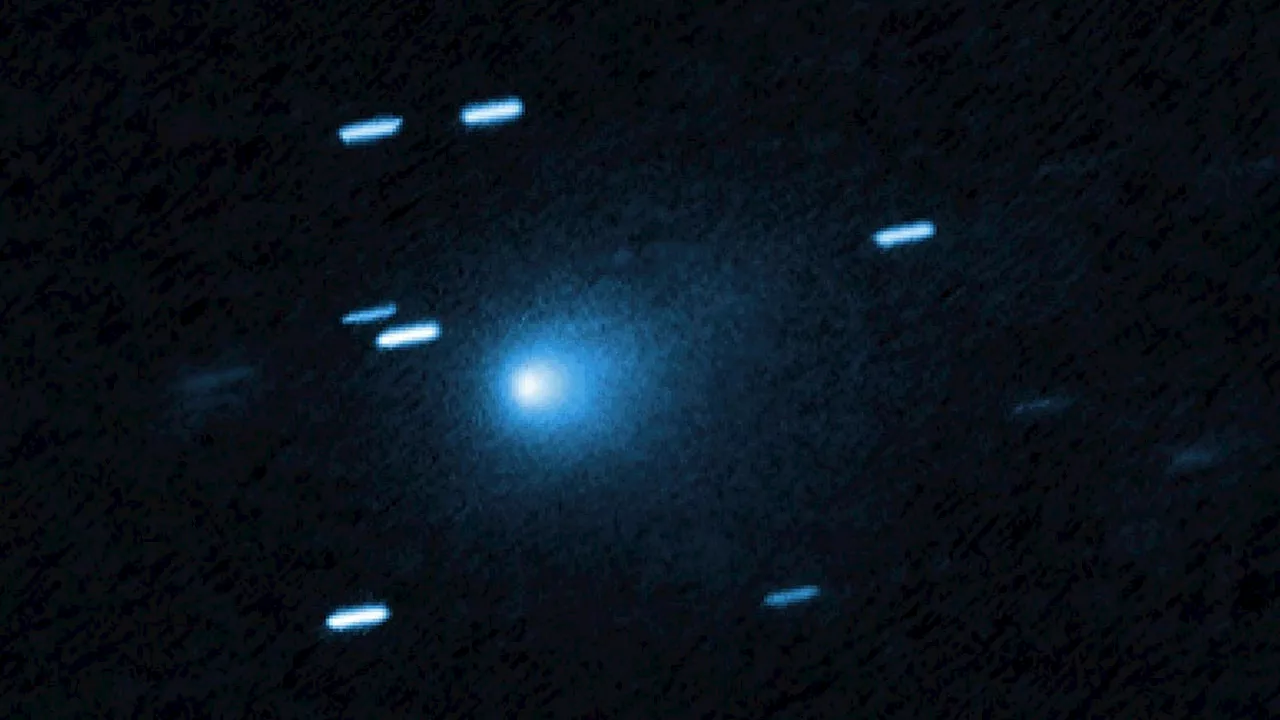Scientists are investigating the peculiar behavior of the interstellar object 3I/ATLAS, which has displayed unexpected characteristics following its closest approach to the Sun. After passing perihelion on October 29, 2023, 3I/ATLAS came within 203 million kilometers of the Sun. Its unusual traits, including non-gravitational acceleration and an absence of a cometary tail, have prompted a wave of scientific curiosity regarding its composition and origin.
Dr. Avi Loeb, a theoretical physicist at Harvard University, noted that after perihelion, 3I/ATLAS exhibited “non-gravitational acceleration” and became bluer than the Sun, which is atypical for comets. Instead of the expected tail usually associated with such objects, new images show a blob of light, raising questions about its material makeup.
The exact nature of 3I/ATLAS remains uncertain. Some researchers are even speculating it could be a technological object. Dr. Loeb pointed out the connection to the mysterious ‘Wow’ signal discovered in 1977, which also originated from the same direction in space. “We don’t know what the source is, but they were within nine degrees of each other,” Dr. Loeb said. “The question is, were they related? There are lots of anomalies.”
In contrast, Dr. Ken Gayley, an astronomy professor at the University of Iowa, emphasized that it is essential to consider natural explanations first. “We would always start off with the assumption that these are natural objects and we would study them in that way. If there’s really very powerful evidence that they’re not, then we might be led toward another direction,” he stated. For now, he believes there is substantial evidence supporting the idea that 3I/ATLAS is a natural object.
The interstellar visitor is set to be closest to Earth on December 19, 2023. Scientists are eager to gather further data during this encounter, hoping to gain insights into other star systems and the conditions that give rise to such phenomena. Dr. Loeb humorously noted, “That’s six days before Christmas. My hope is that we will not receive an unwanted gift for Christmas, for the holidays.”
3I/ATLAS is the third known interstellar object, following 1I/Oumuamua in 2017 and 2I/Borisov in 2019. It is named for the team behind the Asteroid Terrestrial-impact Last Alert System survey telescope based in Rio Hurtado, Chile. The letter “I” in its name denotes its interstellar origin, indicating it has traveled from outside our solar system.
As scientists continue to monitor 3I/ATLAS, the mysteries surrounding it highlight the vast unknowns of our universe. Through their investigations, researchers hope to unravel the secrets of this enigmatic object and enhance our understanding of cosmic phenomena.







